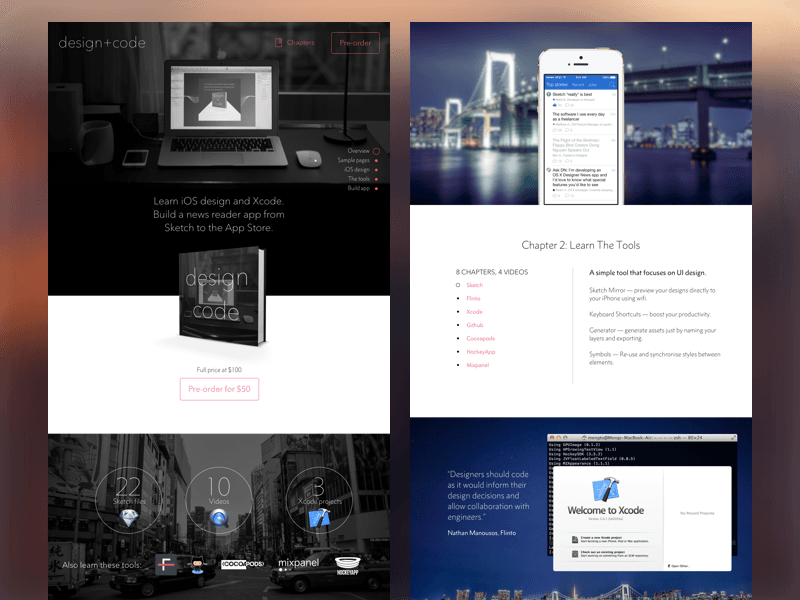We all need a break sometimes. I mean a real break; not a long walk in the countryside or a weekend away, but a change of scenery in the workplace that turns things upside down and induces a fresh wave of relief.
I will never say that a daily routine doesn’t yield fruitful results, but after a while you can start to feel like you have an itch, and an itch needs to be scratched.
Many designers (and developers) working in real offices often dream about making the switch to freelance for obvious reasons; unlimited freedom, more money, no bosses to deal with, but mostly more freedom. However, those of us that are location-independent know that’s a naivety at best.
We need to stay focused for a number of hours each day, take care of our own taxes, and then there’s still bossy clients to deal with. Personally, I think there are more upsides than downsides, but it all comes down to what sort of character you are and the lifestyle you choose.
One of those upsides is that you’re free to work whenever you like, but it’s important to remember that when you’re not working, you’re also not earning.
In this article I’ll discuss three ways in which developers and designers can earn money while taking a break from their day-to-day routine.

1. Blogging
Sadly there’s a lot of misconceptions about blogging. While there are a huge amount of “writers” who sell “SEO articles” (I’m totally sighing and rolling my eyes as I’m writing this) for $5, there’s also an abundance of well-established blogs that continuously await new authors and compensate you generously; and the chances are, you’re already equipped to start right away.
For starters, SitePoint publishes approximately 8–10 books every year and is always looking for new authors.
What do I need to get started?
You (usually) need to have PayPal
I’ve never written for a blog that compensated authors with something other than PayPal; it’s a universal service and one that most (if not all) freelancers are already using. Any respectable blog will ask you to agree on the amount of compensation before you start writing and issue the total compensation for that month on a specific date. If you’re tired of fighting with clients over the agreed fees, take up writing.
You need to respect “Style Guides” and formats
Every blog has a “voice”, writing style and their own formatting rules. You should respect them and try to integrate with their workflow as much as you can — Markdown, WordPress, Microsoft Word and HTML formats are quite common.
Most blogs will accept subordinate formats and I’ve been fortunate enough to work exclusively with Markdown, but it’s wise to familiarise yourself with a few common tools so there’s no surprises.
It’s also important to submit your work with dignity. Each time you submit a draft it should be fact-checked, spell-checked and grammar-checked — your editor is not there to convert your ramblings into a readable article.
You need to know what you’re talking about
Design and development are two very broad subjects. You’re not expected to be a “Yoda” on the subject, but you should be highly skilled in certain areas and confident that what you’re saying is useful to a large chunk of the readership.
It also helps to be an avid reader of the blog you’re writing for so that you can ask yourself, “as a reader, would I find this interesting?”.
2. Write a book
If you find it challenging to come up with fresh topics to write about and you have enough savings to last you a few months, write a book. All you need is a well-crafted, sales-oriented website and something to scoop up the revenue with (I’d recommend Stripe, but PayPal will work fine). You also need to be active in thriving communities; Designer News, Product Hunt and Nomad Forum are brilliant communities — start by sharing your idea there.
Meng To is a designer, coder and author. He wrote Design+Code and his story resonates with me especially. After having a visa denied he decided to write his Sketch App/iOS/Swift book while travelling for 18 months across 30 cities and 20 countries. He also built a startup in the meantime and I’m certain that he owes a fraction of his success to a varied lifestyle.
When he’s not working as a freelance user interface designer he’s adding new chapters to the book or running a workshop in a new city.

Exact figures are unknown, but Meng surely sold many copies of his exceptional book — I’m one of them.
3. Creating a workshop or teaching a course
Running a workshop has varying degrees of complexity. It can be as specific as teaching a small online course on how to use Sketch App, or as broad as touring the world with a full-on design and code workshop. Not only will it improve your confidence but it’ll improve your reputation too.
You become the default ‘authority’ on your given subject for a whole new group of people. When they need advice and services they’ll think of you first.
Personal branding does matter. Plus, you’ll be able to make money teaching the things you love most and meeting a tonne of like-minded individuals.
Conclusion
If you’re currently employed full-time and you work in a real office, it will inevitably be much harder to do any of these things. But not impossible.
Many companies run a staff-edited blog; you might not be the company’s blog editor but that doesn’t mean you can’t be involved. If the everyday tasks are becoming a little tiresome, suggest to your boss that you’d like to explore other areas of the company every once in a while.
If you’re a designer or hacker who is constantly keeping up with the latest trends, you’re worth something to the community. Give back — it’s incredibly rewarding and might just stop you from going insane.
 Daniel Schwarz
Daniel SchwarzPreviously, design blog editor at Toptal and SitePoint. Now Daniel advocates for better UX design alongside industry leaders such as Adobe, InVision, Marvel, Wix, Net Magazine, LogRocket, CSS-Tricks, and more.

